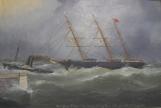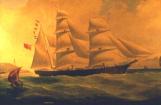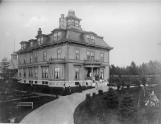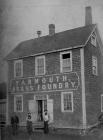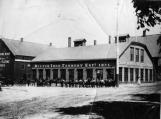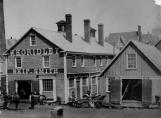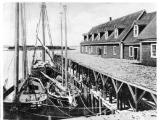3
To illustrate the importance of Yarmouth vessels in world trade we can cite the following: in 1876 Yarmouth vessels made over 800 calls to at least 156 ports around the world. Much of this trade was Transatlantic with Liverpool, England being the most visited port. However, they also called at ports in Africa, India, the Far East, Australia, and both East and West Coasts of both South and North America. Later on, in the 1880's and 1890's, our ships travelled to these faraway places more often.5
They carried bulk cargoes such as:-coal, from South Wales to coaling ports such as Rio Janeiro, Buenos Ayres and Cape Town
-coal from Newcastle, Australia to South America
7
-oil from Philadelphia, Baltimore and New York to the Far East, including Japan, Shanghai, Hong Kong and the Philippines-sugar from the Philippines to Europe
-jute from India to Europe and the United States
9
-grain from Portland, Oregon and San Francisco to Europe-guano from Chile and Ecuador to Europe
-wood from Canada and the United States to Europe and South America
just to name a few cargoes.
11
While these ships were registered in Yarmouth they hardly ever, if ever, visited Yarmouth. But the captains, and often the first mates, were Yarmouth men and, with the ownership of the vessels retained in Yarmouth, the money that the ships made came back to our town. The wealth accumulated by Yarmouth's ship-owning businessmen and seafarers is still in evidence today in the form of large elaborate houses and buildings, both in residential areas of town and along the main streets.15
The shipping industry gave rise, directly and indirectly, to a number of businesses and industries, some of which are still in operation. Included here were shipyards, boatshops, blockmaking shops and all the other segment industries of shipbuilding: chandlers and suppliers, repair facilities, shipsmiths, and foundries. The foundries, which were initially established to provide cast iron fittings for ships, launched out into the production of many items including stoves and kitchen ranges. One foundry, the Burrill-Johnson Iron Company, even produced complicated marine engines, sometimes the complete vessel, and, later on shells for wartime use.As the sailing vessel bowed out to the steamers, Yarmouth businessmen reinvested their money. A major industry was established in the Yarmouth Duck and Yarn Company. Dominion Textiles, the descendants of that company, was a mainstay of Yarmouth's industry until 1991.
